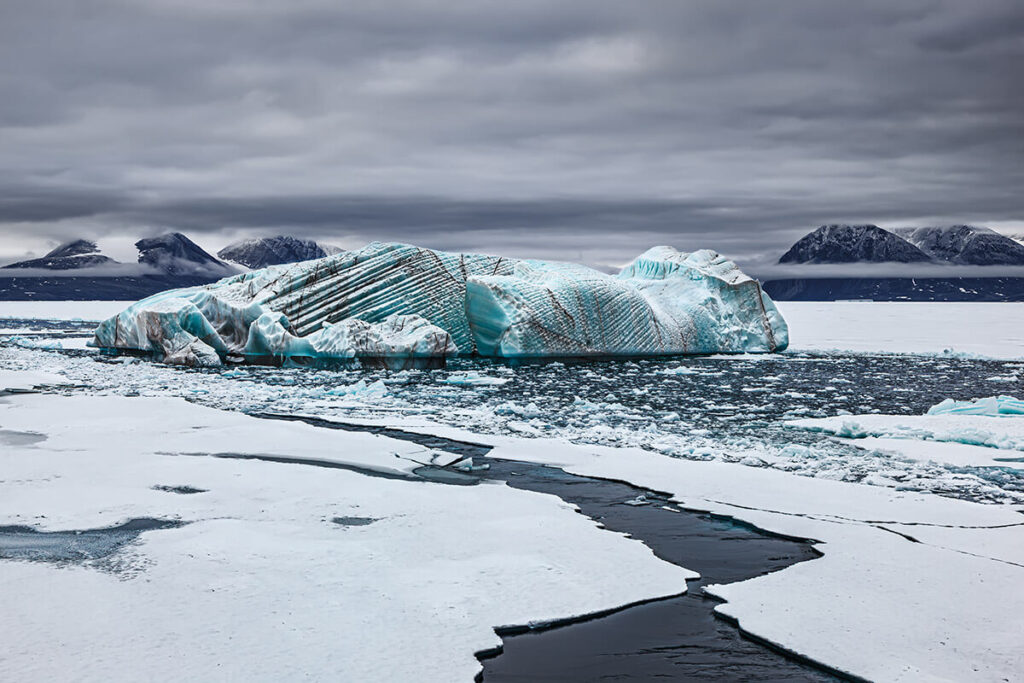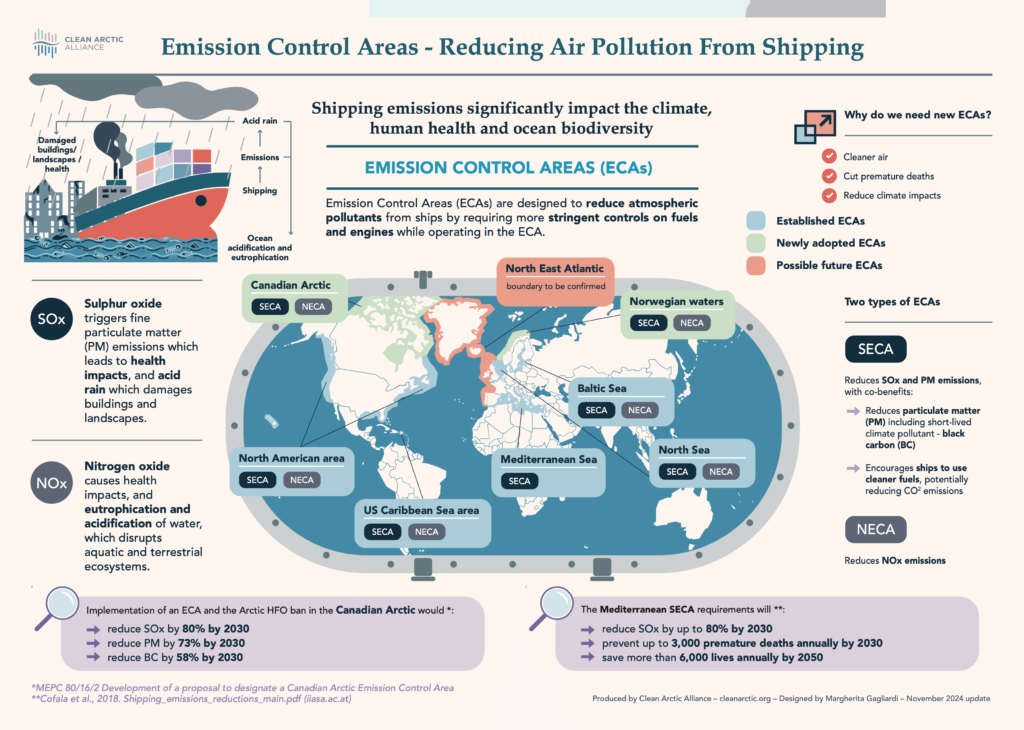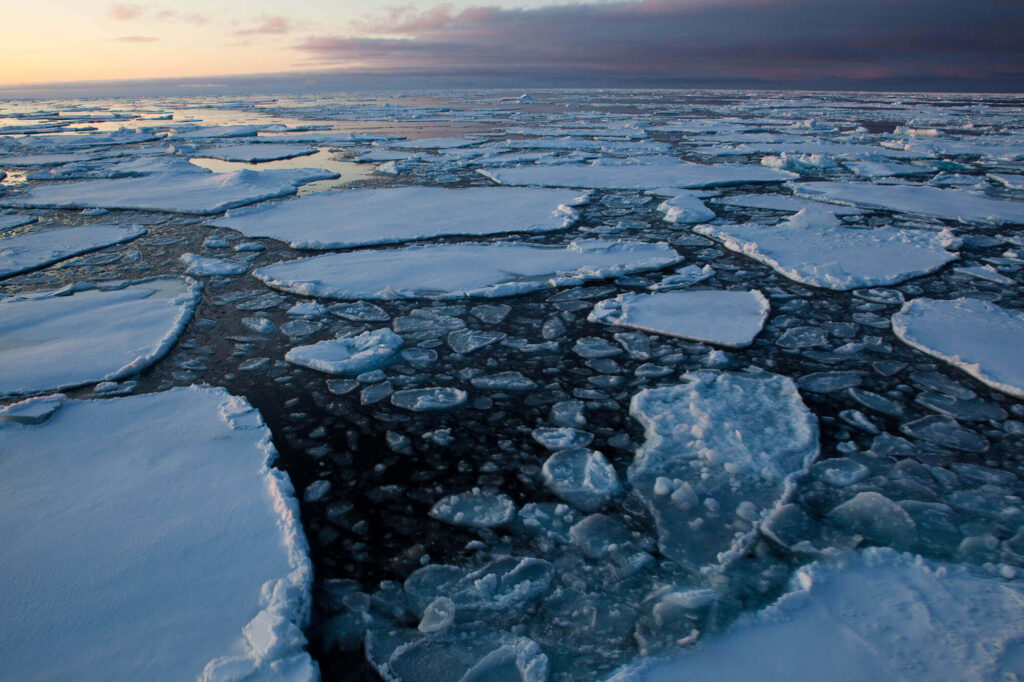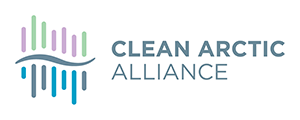Media Briefing: At MEPC 80, the Shipping Sector Must Set Course for 50% Emission Cuts by 2023 – Including Black Carbon

Clean Arctic Alliance Media Briefing Ahead of MEPC 80: 3-7 July 2023
Low Hanging Fruit: Reducing Shipping’s Black Carbon Emissions This Decade

Increasing Arctic shipping brings increasing risks and threats – with emissions of black carbon and of greenhouse gases from vessels contributing to the climate crisis. Yet, this threat can be greatly reduced. The shipping sector has the power to quickly reduce emissions of black carbon.
Infographic: Emission Control Areas – Reducing Air Pollution From Shipping

Shipping emissions significantly impact the climate, human health and ocean biodiversity. Emission Control Areas (ECAs) are designed to reduce atmospheric pollutants from ships by requiring more stringent controls on fuels and engines while operating in the ECA.
NGO Response to News of Impending Ice Free Arctic Summers

The International Cryosphere Climate Initiative, the Inuit Circumpolar Council and Clean Arctic Alliance today call on the international shipping sector to halve its climate impact this decade by slashing CO2 and black carbon emissions, in response to a new study published in Nature Communications which predicts the Arctic having ice free summers in coming decades.
IMO: Governments Carry Responsibility For Curbing of Shipping’s LNG Problem

UN International Maritime Organization (IMO) negotiations, kicking off June 26 in London, UK, could either set the course for a comprehensive global climate plan for the shipping industry or derail the Paris Agreement to limit a global temperature increase of 1.5 °C.

